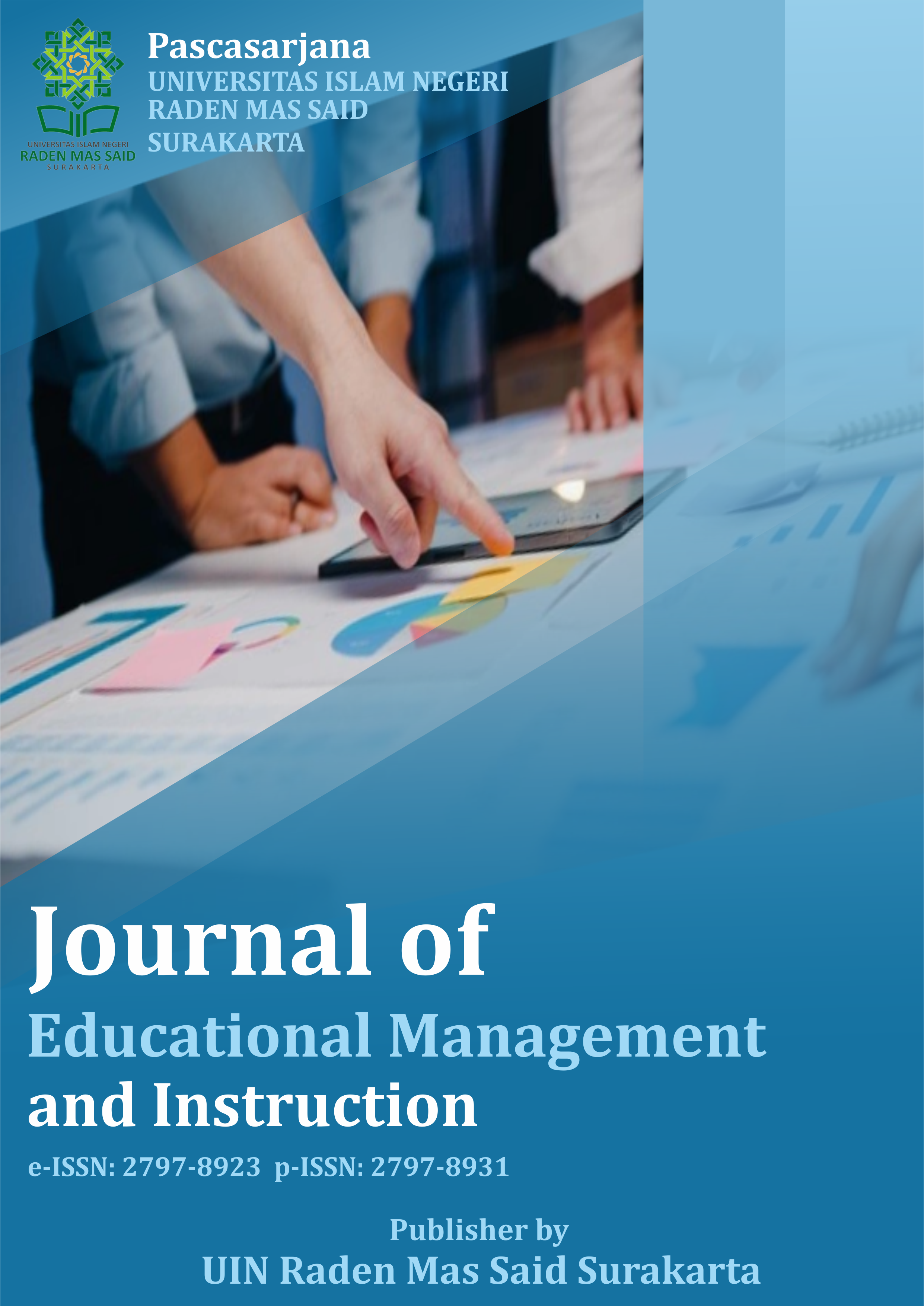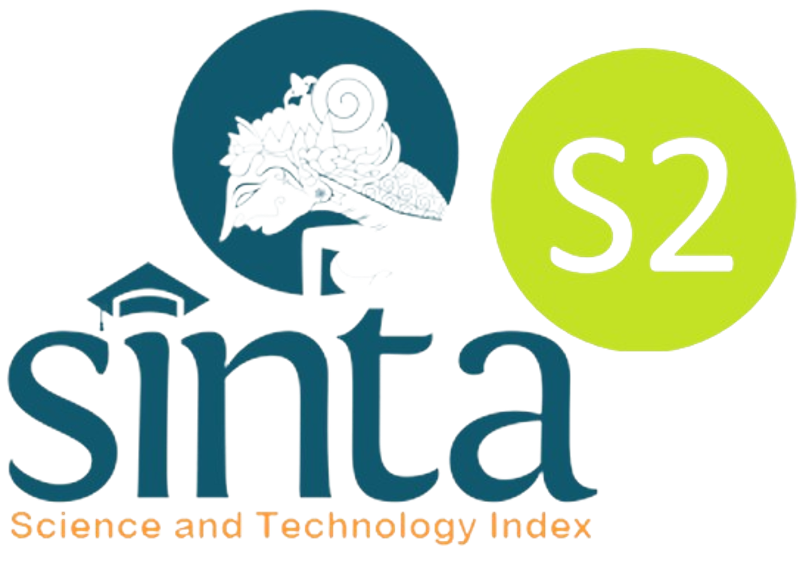Communication and Mathematic reasoning: Theory of planned behavior and inquiry
DOI:
https://doi.org/10.22515/jemin.v1i2.4281Keywords:
communication, inquiry, reasoning, theory of planned behaviorAbstract
The purpose of this study is to investigate the aspects of communication and mathematical reasoning. In investigating the aspects of mathematical communication with an inquiry approach, of course there are several things observed related to learning mathematics. The focus of the material aims at observing communication and mathematical reasoning within the framework of inquiry, and the theory of planned behavior (TPB) is geometry and algebra. The research method used a qualitative research by looking at case studies with research subjects consisting of 31 prospective mathematics teachers in Semarang city. From the aspect of communication and mathematical reasoning that exists, it can be seen from the answers of 31 prospective mathematics teachers with an authentic point of view of inquiry and a theory of planned behavior for problem solving. From the observation, several cognitive processes are adapted to the authentic framework of inquiry and the theory of planned behavior for algebra and geometry material. In reasoning, a wedge appears between mathematical reasoning and communication adapted to the framework of inquiry and the theory of planned behavior. The contribution of this study is to determine the communication framework and mathematical reasoning from the theoretical aspects of planned behavior and inquiry. It is important to know aspects of communication and mathematical reasoning from a different perspective.
Downloads
References
Arbaugh, J. B. et al. (2008). Internet and Higher Education Developing a community of inquiry instrument: Testing a measure of the Community of Inquiry framework using a multi-institutional sample. The Internet and Higher Education. Elsevier Inc., 11(3–4),133–136. doi: 10.1016/j.iheduc.2008.06.003.
Berkowitz, M. W. and Hoppe, M. A. (2009). Character education and gifted children. High Ability Studies. 20(2), 131–142. doi: 10.1080/13598130903358493.
Buyung, B., Sumarli, S. and Rosmaiyadi, R. (2020). Development of problem based learning based on ethnomatematics to support students mathematics literacy ability and self-confidence. AIP Conference Proceedings, 2268. doi: 10.1063/5.0017833.
Cooke, B. D. and Buchholz, D. (2005). Mathematical communication in the classroom: A teacher makes a difference. Early Childhood Education Journal, 32(6), 365–369. doi: 10.1007/s10643-005-0007-5.
Hartinah, S. et al. (2019). Probing-prompting based on ethnomathematics learning model: The effect on mathematical communication skills. Journal for the Education of Gifted Young Scientists, 7(4), 1–16. doi: 10.17478/jegys.574275.
Herawaty, D. et al. (2019). The Improvement of the Understanding of Mathematical Concepts through the Implementation of Realistic Mathematics Learning and Ethnomathematics. 295(ICETeP 2018), 21–25. doi: 10.2991/icetep-18.2019.6.
Kaya, D. and Aydin, H. (2016). Elementary mathematics teachers’ perceptions and lived experiences on mathematical communication. Eurasia Journal of Mathematics, Science and Technology Education, 12(6), 1619–1629. doi: 10.12973/eurasia.2014.1203a.
Komatsu, K. (2021). Generating mathematical knowledge in the classroom through proof, refutation, and abductive reasoning. Educational Studies in Mathematics. doi: 10.1007/s10649-021-10086-5.
Kosko, K. W. and Wilkins, J. L. M. (2010). Mathematical communication and its relation to the frequency of manipulative use. International Electronic Journal of Mathematics Education, 5(2), 79–90.
Lim, C. S. and Chew, C. M. (2007). Improving mathematical communication ability and self regulation learning of yunior high students by using reciprocal teaching. Journal on Mathematics Education, 4(1), 59–74.
Lomibao, L. S., Luna, C. A. and Namoco, R. A. (2016). The Influence of Mathematical Communication on Students’ Mathematics Performance and Anxiety. American Journal of Educational Research, 4(5), 378–382. doi: 10.12691/education-4-5-3.
MacFarlane, K. and Woolfson, L. M. (2013). Teacher attitudes and behavior toward the inclusion of children with social, emotional and behavioral difficulties in mainstream schools: An application of the theory of planned behavior. Teaching and Teacher Education. Elsevier Ltd, 29(1), 46–52. doi: 10.1016/j.tate.2012.08.006.
Pantaleon, K. V., Juniati, D. and Lukito, A. (2018). The oral mathematical communication profile of prospective mathematics teacher in mathematics proving. Journal of Physics: Conference Series, 1108(1). doi: 10.1088/1742-6596/1108/1/012008.
Rattan, A., Good, C. and Dweck, C. S. (2012). It’s ok - Not everyone can be good at math”: Instructors with an entity theory comfort (and demotivate) students. Journal of Experimental Social Psychology. Elsevier Inc., 48(3), 731–737. doi: 10.1016/j.jesp.2011.12.012.
Sadaf, A., Newby, T. J. and Ertmer, P. A. (2012). Exploring factors that predict preservice teachers’ intentions to use web 2.0 technologies using decomposed theory of planned behavior. Journal of Research on Technology in Education, 45(2), 171–196. doi: 10.1080/15391523.2012.10782602.
Sanchez, T. R. and Stewart, V. (2006). The Remarkable Abigail: Story-Telling for Character Education. The High School Journal, 89(4), 14–21. doi: 10.1353/hsj.2006.0008.
Santos, M. (2019). Units of Measurement in Social Practices: An Ethnomathematic Study. American International Journal of Contemporary Research, 9(2), 32–39. doi: 10.30845/aijcr.v9n2p4.
Siddiky, R. (2021). Association between Students Inattentiveness to Study and their Psychological Conditions during the COVID-19 Pandemic. Asian Journal of University Education, 17 (2), 27-38.
Sinclair, N. and Heyd-metzuyanim, E. (2014). Learning Number with TouchCounts : The Role of Emotions and the Body in Mathematical Communication. Journal: Technology, Knowledge, and Learning, 1(2). doi: 10.1007/s10758-014-9212-x.
Sukoriyanto, J. et al. (2016). Students thinking process in solving combination problems considered from assimilation and accommodation framework. Educational Research and Reviews, 11(16), 1494–1499. doi: 10.5897/err2016.2811.
Sundayana, R. et al. (2017). Using ASSURE learning design to develop students’ mathematical communication ability. World Transactions on Engineering and Technology Education, 15(3), 245–249.
Swan, K., Garrison, D. R. and Richardson, J. C. (2009). A constructivist approach to online learning: The community of inquiry framework. Information Technology and Constructivism in Higher Education: Progressive Learning Frameworks, 43–57. doi: 10.4018/978-1-60566-654-9.ch004.
Syamsuri et al. (2016). Characterization of students formal-proof construction in mathematics learning. Communications in Science and Technology, 1(2), 42–50. doi: 10.21924/cst.1.2.2016.2.
Williams, D. D. et al. (2003). Character education in a public high school: A multi-year inquiry into unified studies. Journal of Moral Education, 32(1), 3–33. doi: 10.1080/0305724022000073310.
Yang, E. F. Y. et al. (2016). Improving Pupils ’ Mathematical Communication Abilities Through Computer-Supported Reciprocal Peer Tutoring Linked references are available on JSTOR for this article : Improving Pupils ’ Mathematical. International Forum of Educational Technology & Society, 19(3), 157–169.
Downloads
Submitted
Accepted
Published
How to Cite
Issue
Section
License
Copyright (c) 2021 Abdul Aziz, Iswahyudi Joko Suprayitno

This work is licensed under a Creative Commons Attribution-NonCommercial 4.0 International License.
Copyright
Copyright aims to protect the specific way the article has been written to describe an experiment and the results. Journal of Educational Management and Instruction is committed to its authors to protect and defend their work and their reputation and takes allegations of infringement, plagiarism, ethical disputes, and fraud very seriously. Automotive Experiences is published under the terms of the Attribution-NonCommercial 4.0 International (CC BY-NC 4.0). Authors retain copyright and grant the journal right of first publication (online and print) with the work simultaneously. We use the restrictive license (non-commercial) as follows:
BY (attribution): Users are allowed to share, distribute and redistribute the published article in any medium or format, with an identification of the authors and its initial publication in this journal. Authors are encouraged to post and distribute their articles immediately after publication (e.g., institutional or public repositories, personal websites). Authors are allowed to enter into additional contractual arrangements for the non-exclusive distribution of the published and an acknowledgment of its initial publication in this journal.
NC (non-commercial): Users are not allowed to use the article commercially without the permission of the authors. Authors agree explicitly that the published article is indexed worldwide in databases, repositories and indexation services, even if these services operate on a commercial basis. Authors grant Journal of Educational Management and Instruction explicit the right to include the published articles in databases, repositories and indexation services.
License
License to Publish
The non-commercial use of the article will be governed by the Attribution-NonCommercial 4.0 International (CC BY-NC 4.0). The author hereby grants Journal of Educational Management and Instruction an exclusive publishing and distribution license in the manuscript include tables, illustrations or other material submitted for publication as part of the manuscript (the “Articleâ€) in print, electronic and all other media (whether now known or later developed), in any form, in all languages, throughout the world, for the full term of copyright, and the right to license others to do the same, effective when the article is accepted for publication. This license includes the right to enforce the rights granted hereunder against third parties.
Author's Warranties
The author warrants that the article is original, written by stated author/s, has not been published before, contains no unlawful statements, does not infringe the rights of others, is subject to copyright that is vested exclusively in the author and free of any third party rights, and that any necessary written permissions to quote from other sources have been obtained by the author(s).
User Rights
Under the Creative Commons Attribution-Non Commercial 4.0 International (CC BY-NC 4.0) license, the author(s) and users are free to share (copy and redistribute the material in any medium or format) and adapt (remix, transform, and build upon the material). Users must give appropriate credit, provide a link to the license, and indicate if changes were made.
Rights of Authors
Authors retain the following rights:
- Copyright, and other proprietary rights relating to the article, such as patent rights,
- The right to use the substance of the article in future own works, including lectures and books,
- The right to reproduce the article for own purposes, provided the copies are not offered for sale, and
- The right to self-archive the article.
Co-authorship
If the article was prepared jointly with other authors, the signatory of this form warrants that he/she has been authorized by all co-authors to sign this agreement on their behalf, and agrees to inform his/her co-authors of the terms of this agreement.

























